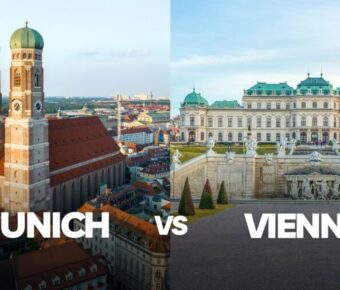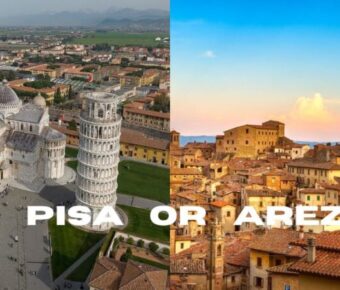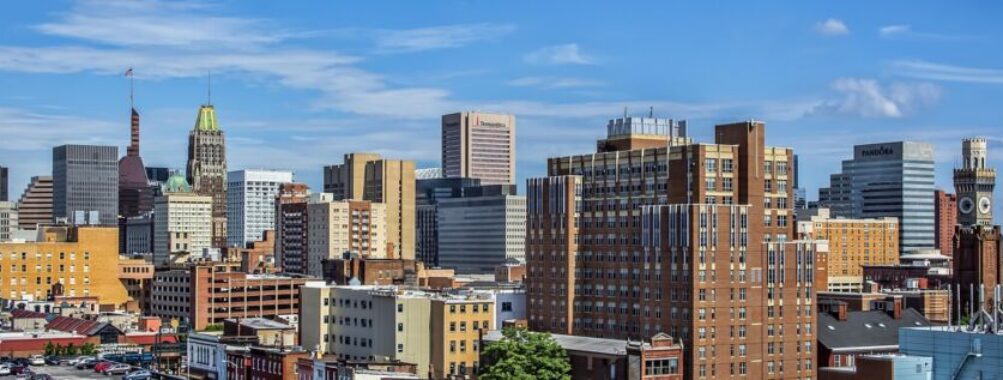
Is Baltimore Safe? 5 Surprising Facts Every Visitor Should Know
Baltimore‘s reputation for crime often raises eyebrows among travelers. The city’s high crime rate is no secret, but that doesn’t tell the whole story. While some areas of Baltimore do pose safety risks, many neighborhoods and tourist spots are quite safe to visit.
It’s all about knowing where to go and how to stay alert. The Inner Harbor, for example, is a popular spot that’s well-patrolled and generally safe for tourists. But like any big city, Baltimore has its rough patches that are best avoided.
Smart travelers can have a great time in Charm City. By sticking to well-lit areas, staying aware of surroundings, and using common sense, visitors can enjoy Baltimore’s rich history, vibrant culture, and tasty crab cakes without worry. It’s about balancing caution with adventure.
Contents
- Understanding Baltimore’s Crime Rates
- Comparing Crime Statistics
- Violent Crime Rate Versus Property Crime Rate
- Crime by Zip Code and Crime Map Analysis
- Baltimore’s Safest Neighborhoods
- Federal Hill and Riverside
- Mount Vernon and Hampden
- Locust Point and Mount Washington
- Areas with Higher Crime Rates
- West Baltimore and Greenmount East
- Fairfield and Cherry Hill
- Tips for Personal Safety and Security
- Best Practices for Home Security
- Staying Safe on Public Transport
- Navigating Downtown and Inner Harbor
- Addressing Common Crimes in Baltimore
- Theft and Robbery Incidences
- Assault and Aggravated Assault Cases
- Vehicle Theft and Break-ins
- Crime Prevention and Community Initiatives
- Police Presence and Law Enforcement Actions
- Neighborhood Watch and Crime Prevention Programs
- Visitor Information for Baltimore Travelers
- Tourist Attractions and Safety
- Food and Dining: A Focus on Seafood Restaurants
- Outdoor Activities and Recreational Spots
- Frequently Asked Questions
- What precautions should one take when exploring Baltimore at night?
- How does the safety of Baltimore’s Inner Harbor compare to other city tourist attractions?
- What are the recommended neighborhoods in Baltimore for a secure living environment?
- In terms of safety, how does Baltimore stand as a choice for prospective college students?
- How does Baltimore’s crime rate compare with other major cities in the US?
- What are the latest safety tips for visitors planning a trip to Baltimore?
- More Travel Guides
Understanding Baltimore’s Crime Rates
Baltimore’s crime rates paint a complex picture of safety in the city. Let’s take a closer look at the statistics, types of crime, and how they vary across different areas.
Comparing Crime Statistics
Baltimore’s crime rate sits at 62.58 per 1,000 residents in a typical year. That’s pretty high compared to other U.S. cities. But there’s good news too. In 2024, Baltimore saw some big drops in crime. Homicides went down by 23%, and non-fatal shootings dropped by 34%.
These numbers show things are getting better. The police are working hard to make the city safer. Still, it’s important to be aware of your surroundings, especially in certain areas.
Violent Crime Rate Versus Property Crime Rate
When we look at crime in Baltimore, we need to split it into two main types: violent crime and property crime. Violent crimes include things like assault and robbery. Property crimes are stuff like theft and burglary.
In Baltimore, violent crime tends to be higher than property crime. This is different from many other cities. The chance of being a victim of crime can be as high as 1 in 6 in some neighborhoods. But in safer areas, it drops to about 1 in 43.
Crime by Zip Code and Crime Map Analysis
Crime isn’t spread evenly across Baltimore. Some areas are much safer than others. Generally, people think the northeast part of the city is safest. The southwest neighborhoods tend to have more crime.
Crime maps help show these differences. They use colors to show which areas have more or less crime. These maps can be really useful if you’re planning a trip or thinking about moving to Baltimore.
It’s worth noting that even in higher-crime areas, most people don’t experience crime directly. But it’s still smart to be careful and aware of your surroundings, no matter where you are in the city.
Baltimore’s Safest Neighborhoods
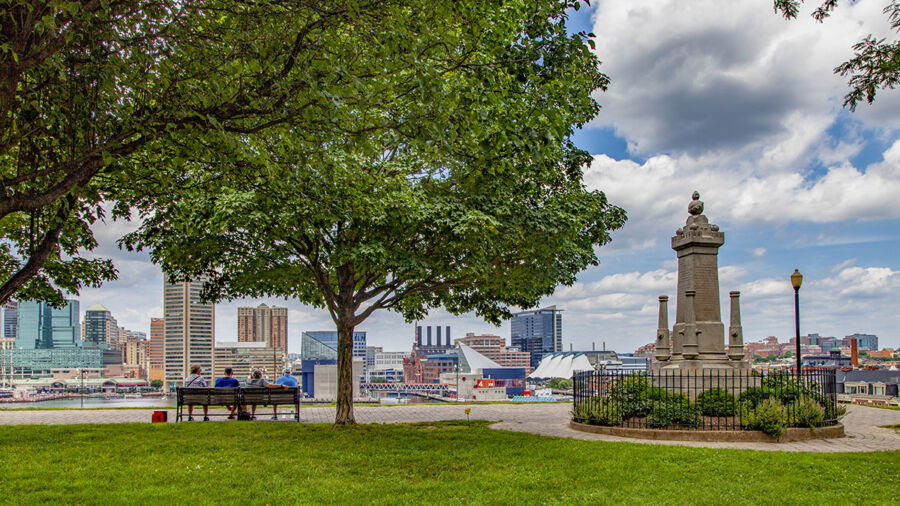
Baltimore has several neighborhoods known for their safety and charm. These areas offer a mix of urban amenities and community vibes, making them popular spots for residents and visitors alike.
Federal Hill and Riverside
Federal Hill and Riverside are two of Baltimore’s safest and most sought-after neighborhoods. Located south of the Inner Harbor, these areas boast stunning views of the city skyline. Federal Hill is known for its historic charm, with rows of beautiful brick homes and a lively main street filled with shops and restaurants.
Riverside is a bit quieter but equally appealing. It’s home to Riverside Park, a great spot for picnics and outdoor activities. Both neighborhoods have strong community ties and active neighborhood associations that help keep the areas safe and clean.
Crime rates in these neighborhoods are lower than the city average. Residents often leave doors unlocked and feel comfortable walking around at night.
Mount Vernon and Hampden
Mount Vernon and Hampden offer different flavors of Baltimore living, but both are known for their safety. Mount Vernon is the city’s cultural heart, with museums, theaters, and historic buildings. It’s popular with young professionals and artists.
Hampden has a quirky, hipster vibe. The main drag, 36th Street (known as “The Avenue”), is lined with unique shops and eateries. It hosts fun events like the annual “Hon Fest” celebration of Baltimore culture.
Both neighborhoods have strong community spirits. Neighbors look out for each other, which helps keep crime rates low. You’ll often see people walking dogs or chatting on stoops late into the evening.
Locust Point and Mount Washington
Locust Point and Mount Washington round out our list of Baltimore’s safest areas. Locust Point is a peninsula in South Baltimore, home to Fort McHenry and Under Armour’s headquarters. It’s a bit isolated, which contributes to its low crime rate.
The neighborhood has a mix of long-time residents and newcomers. There’s a real small-town feel, with community events and a popular waterfront park.
Mount Washington, in North Baltimore, feels almost suburban. It’s known for its excellent schools and leafy streets. The village center has cute shops and restaurants.
Both areas are great for families and anyone looking for a quiet, safe place to live in the city. Crime rates are well below the Baltimore average.
Areas with Higher Crime Rates
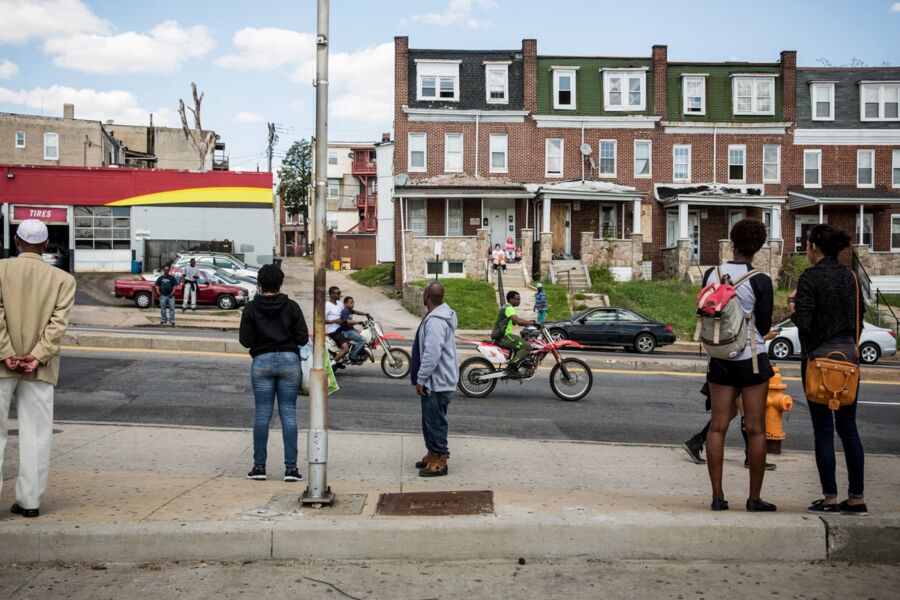
Baltimore faces safety challenges in certain neighborhoods. Some areas have higher crime rates than others, with specific parts of the city seeing more incidents of violent crime and property offenses.
West Baltimore and Greenmount East
West Baltimore and Greenmount East are two areas that struggle with elevated crime rates. These neighborhoods have seen more violent crimes compared to other parts of the city.
West Baltimore, in particular, has gained a reputation as one of the more dangerous areas. It’s been the focus of many crime reduction efforts by local police. The neighborhood deals with issues like drug-related violence and gang activity.
Greenmount East also faces similar problems. This area has higher than average rates of robberies and assaults. Residents here often worry about their safety, especially at night.
Both neighborhoods are working to improve safety. Community programs and increased police presence aim to reduce crime. But progress has been slow, and these areas remain risky for visitors and locals alike.
Fairfield and Cherry Hill
Fairfield and Cherry Hill are two more Baltimore neighborhoods with higher crime rates. These areas face challenges with both violent and property crimes.
Fairfield, an industrial area, sees a lot of property crime. Break-ins and thefts are common problems here. The area’s layout, with many warehouses and empty lots, can make it easier for criminals to operate unnoticed.
Cherry Hill, located in south Baltimore, struggles with violent crime. Gang activity is a major concern in this neighborhood. Shootings and drug-related offenses occur more frequently here than in other parts of the city.
Both areas are trying to turn things around. Community groups are working with police to make these neighborhoods safer. But for now, visitors should be extra careful when in Fairfield or Cherry Hill, especially after dark.
Tips for Personal Safety and Security
Staying safe in Baltimore is all about being smart and aware. A few simple steps can go a long way in keeping you secure while enjoying all the city has to offer.
Best Practices for Home Security
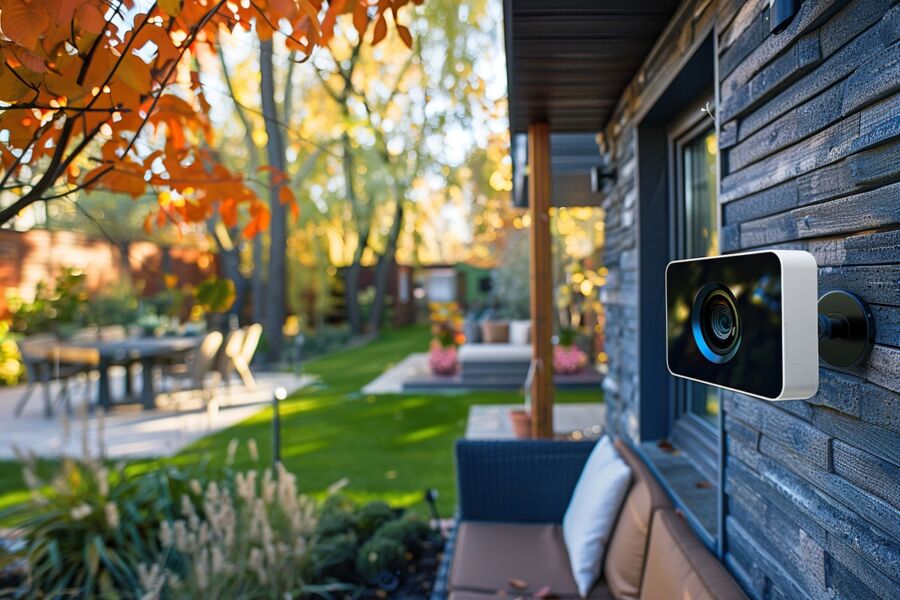
Lock up tight! Double-check doors and windows before leaving or going to bed. A deadbolt on your front door is a must. Consider installing a security system or smart doorbell camera. They’re more affordable than ever these days.
Keep your yard tidy and well-lit. Burglars hate feeling exposed. Motion-sensor lights are great for scaring off would-be intruders.
Don’t advertise your absence on social media. Wait until you’re back to post those vacation pics. Ask a trusted neighbor to collect mail and packages if you’re away for more than a day or two.
Staying Safe on Public Transport
Baltimore’s public transit can be a great way to get around. But stay alert, especially at night. Sit near the driver on buses if possible. On the light rail, choose a car with other passengers.
Keep valuables out of sight. Pickpockets love distracted tourists. Hold onto your phone tightly – snatch-and-grab thefts do happen.
Uber and Lyft are popular options too. Always check the license plate and driver photo before getting in. Share your trip details with a friend for extra peace of mind.
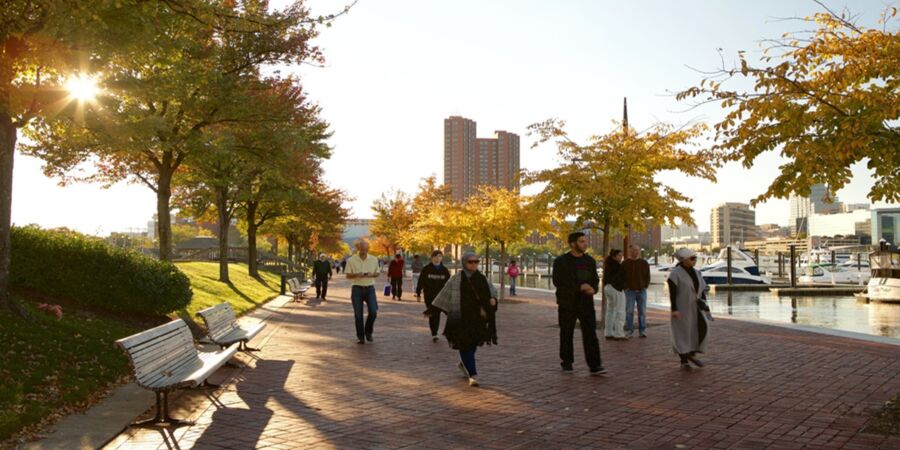
The Inner Harbor is generally safe, with lots of visitors and a strong police presence. Still, be aware of your surroundings, especially after dark. Stick to well-lit, busy areas.
If you’re hitting the bars in Fells Point or Canton, travel in groups when possible. Have a plan to get home safely – whether it’s a designated driver or a rideshare app.
Trust your gut. If a situation feels sketchy, it probably is. Don’t be afraid to duck into a store or change direction if needed. Baltimore cops are usually happy to help if you feel unsafe.
Addressing Common Crimes in Baltimore
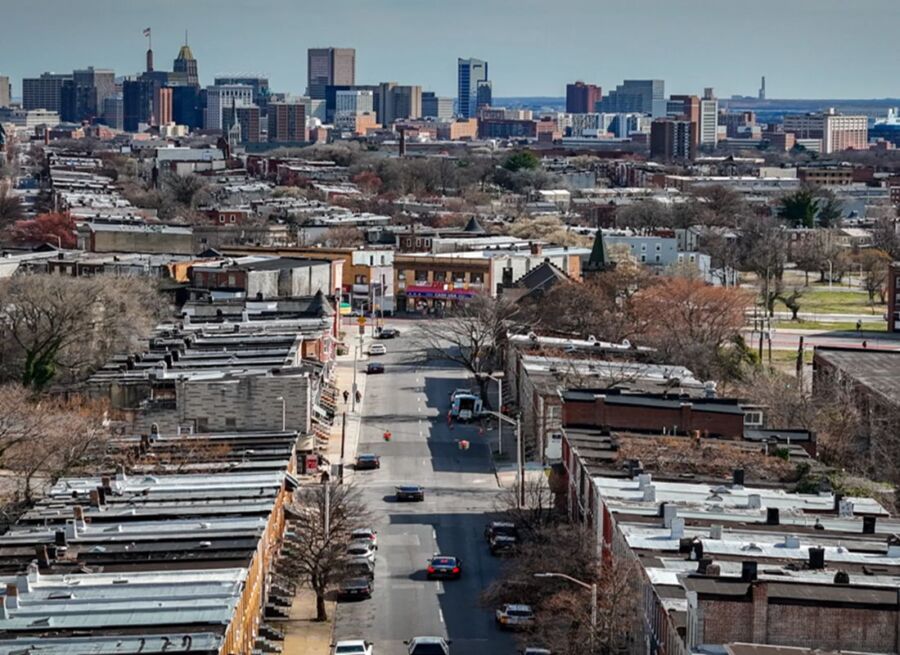
Crime rates in Baltimore have improved recently, but some issues still worry residents and visitors. Let’s look at the most frequent crimes people face in the city.
Theft and Robbery Incidences
Theft and robbery are big problems in Baltimore. Pickpockets often target tourists in busy areas. Muggers sometimes strike in quiet spots or after dark.
To stay safe:
- Keep valuables out of sight
- Stay alert in crowded places
- Avoid walking alone at night
- Use well-lit, busy streets
Some neighborhoods have more theft than others. Downtown and the Inner Harbor are safer, but still have pickpockets. Areas farther from the center can be riskier.
Assault and Aggravated Assault Cases
Assaults happen in Baltimore, but they’re less common than theft. Most attacks aren’t random – they’re between people who know each other.
Tips to lower your risk:
- Don’t get into arguments with strangers
- Leave bars or clubs if things get tense
- Trust your gut if a situation feels off
Gang activity causes some assaults, mainly in certain neighborhoods. Tourists rarely get caught up in these incidents if they stick to safer areas.
Vehicle Theft and Break-ins
Car crime is a big issue in Baltimore. Thieves often break into cars to steal stuff left inside. Sometimes they take the whole car.
To protect your vehicle:
- Never leave valuables visible
- Park in well-lit, busy areas
- Use steering wheel locks or alarms
Carjackings happen too, but they’re less common. Be careful when stopped at lights or getting in and out of your car, especially at night.
Some areas have more car crime than others. Ask locals or your hotel which spots to avoid. Using parking garages or valet services can be safer in high-risk areas.
Crime Prevention and Community Initiatives
Baltimore has several programs to make the city safer. These focus on increasing police presence and getting neighbors involved in watching out for each other.
Police Presence and Law Enforcement Actions
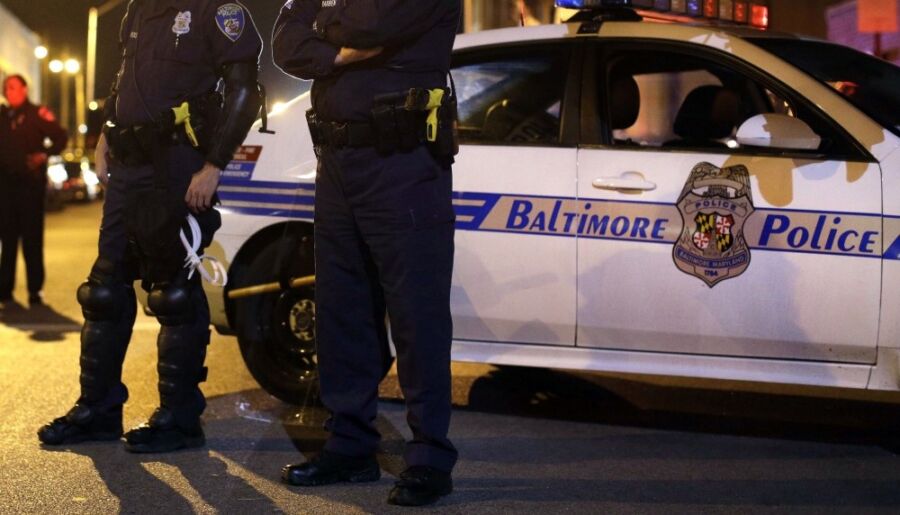
The Baltimore Police Department works hard to keep people safe. They put more officers on the streets in areas with higher crime rates. Cops also do special patrols at night and on weekends when more crimes happen. The police try to build trust with residents by talking to them and going to community events.
There’s a program called CitiWatch that uses cameras to watch public areas. This helps police catch criminals faster. The cops also work with other agencies like the FBI to go after gangs and drug dealers.
Neighborhood Watch and Crime Prevention Programs
Baltimore has lots of ways for regular people to help stop crime. Neighborhood watch groups let residents keep an eye out for trouble on their streets. They work with police to report suspicious stuff.
The Safe Streets program hires ex-gang members to stop fights before they turn violent. These “violence interrupters” talk to people in high-crime areas to calm things down.
There are also programs to give kids things to do after school so they stay out of trouble. Community centers offer sports, tutoring, and other activities.
Residents can take free classes to learn how to protect themselves and their homes from crime. These teach things like locking doors and watching out for scams.
Visitor Information for Baltimore Travelers
Baltimore offers a mix of history, culture, and seafood delights for visitors. The city has attractions and activities to suit various interests, from maritime heritage to modern art.
Tourist Attractions and Safety

Baltimore’s Inner Harbor is a must-see spot. The National Aquarium, home to sharks, dolphins, and tropical fish, is there. The aquarium is usually busy, so book tickets in advance if you can.
For history buffs, Fort McHenry is a top pick. This star-shaped fort defended Baltimore in the War of 1812 and inspired the national anthem. It’s open for tours and has great views of the harbor.
Art lovers shouldn’t miss the American Visionary Art Museum. It’s full of quirky, offbeat art that’ll make you smile. The building itself is a work of art too, covered in shiny mirrors and mosaics.
Safety-wise, stick to well-lit areas and stay aware of your surroundings, especially at night. Most tourist spots are safe, but it’s smart to keep an eye on your belongings.
Food and Dining: A Focus on Seafood Restaurants
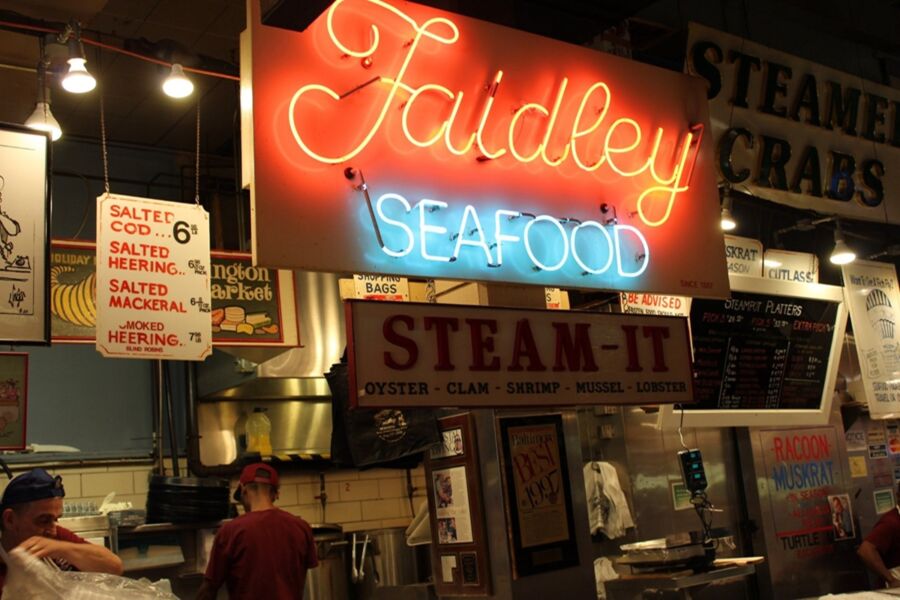
Baltimore is famous for its seafood, especially blue crabs. You’ve got to try them while you’re here!
Faidley’s Seafood in Lexington Market is a local institution. Their crab cakes are legendary. It’s casual dining – you eat standing up at tall tables.
For a fancier meal, check out Thames Street Oyster House in Fell’s Point. They serve amazing oysters and other seafood dishes. The historic building adds to the charm.
If you’re not into seafood, don’t worry. Baltimore has plenty of other options. Try some pit beef, a local specialty. It’s like barbecue, but with its own Baltimore twist.
Outdoor Activities and Recreational Spots
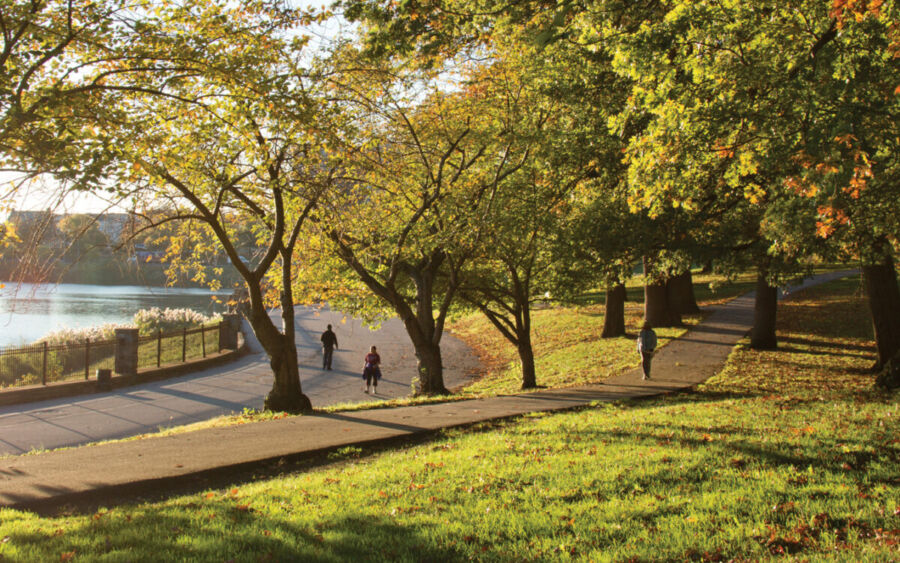
Baltimore’s got some great outdoor spots to enjoy. Patterson Park is a local favorite. It’s got walking trails, a lake, and even a pagoda with city views.
For water activities, head to the Inner Harbor. You can rent kayaks or paddleboards to explore the harbor up close. It’s a fun way to see the city from a different angle.
Druid Hill Park is another good option. It’s home to the Maryland Zoo and the Howard Peters Rawlings Conservatory. The park’s got plenty of space for picnics or a game of frisbee.
If you’re up for a day trip, consider heading out to Chesapeake Bay. It’s great for fishing, boating, or just enjoying the scenery. The bay’s about an hour from the city center.
Frequently Asked Questions
Baltimore’s safety landscape is complex, with varying levels of security across different areas and times. Visitors and residents alike often have questions about staying safe in Charm City.
What precautions should one take when exploring Baltimore at night?
Stick to well-lit, busy areas when out after dark. It’s smart to travel in groups and stay aware of your surroundings. Avoid flashing valuables or walking alone in unfamiliar neighborhoods. Using ride-sharing apps or taxis is a good idea for late-night trips.
How does the safety of Baltimore’s Inner Harbor compare to other city tourist attractions?
The Inner Harbor is generally safe during the day, with lots of visitors and a strong police presence. It’s similar to other popular city waterfronts. At night, it’s best to be more cautious and stay in areas with other people around.
What are the recommended neighborhoods in Baltimore for a secure living environment?
Some of Baltimore’s safer neighborhoods include Roland Park, Mount Washington, and Guilford. These areas have lower crime rates and are known for their family-friendly atmosphere. It’s always a good idea to visit different parts of the city before deciding where to live.
In terms of safety, how does Baltimore stand as a choice for prospective college students?
Baltimore is home to several well-regarded colleges and universities. Many schools have their own security measures in place. Students should learn about campus safety programs and be aware of their surroundings, just like in any big city.
How does Baltimore’s crime rate compare with other major cities in the US?
Baltimore’s crime rate is higher than the national average. It faces challenges similar to other large urban areas. But it’s important to note that crime varies greatly between neighborhoods. Some parts of the city are much safer than others.
What are the latest safety tips for visitors planning a trip to Baltimore?
Visitors should research the areas they plan to visit and stay alert. The Baltimore 311 app can help them report issues or get info. They should keep valuables out of sight and lock car doors. Joining guided tours is a great way to explore the city safely.

